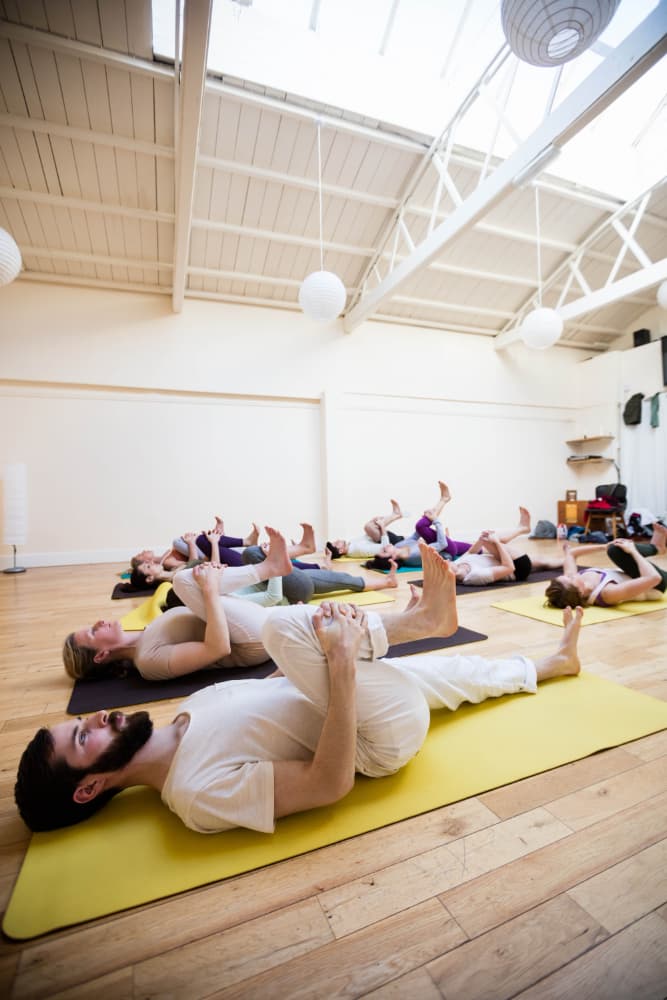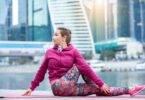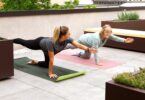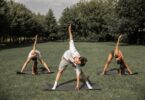Yoga has become a beloved practice worldwide, offering a multitude of benefits for both body and mind. From improving flexibility to reducing stress, yoga classes cater to diverse needs and preferences. Whether you’re a beginner or a seasoned practitioner, there’s a class out there for you. In this article, we’ll dive into the numerous advantages of yoga classes, the various types available, and how to choose the right one for your goals and skill level.
Table of Contents
Benefits of Yoga Classes
Physical Benefits
Yoga isn’t just about touching your toes or twisting your body into complex poses; it’s about creating a balance between strength and flexibility. By regularly attending yoga classes, you can enjoy a range of physical benefits that contribute to overall well-being.
Improved Flexibility
One of the most celebrated benefits of yoga is improved flexibility. Over time, consistent practice helps to stretch and lengthen muscles, which can reduce stiffness and increase your range of motion. This is particularly beneficial for those who spend long hours sitting at a desk.
Enhanced Strength
Yoga classes often incorporate poses that require you to support your own body weight in various ways. These poses, such as planks and warrior poses, help build muscle strength. As a result, you develop toned muscles and enhanced physical endurance.
Better Posture
Poor posture can lead to a variety of health issues, including back and neck pain. Yoga helps you become more aware of your body, encouraging you to stand and sit with better alignment. This increased awareness and muscle strength contribute to improved posture.
Increased Balance
Many yoga poses challenge your balance, which improves your overall stability and coordination. This is especially important as we age, as good balance can help prevent falls and related injuries.
Mental and Emotional Benefits
In addition to the physical perks, yoga classes offer significant mental and emotional benefits. The practice of yoga promotes mindfulness and a sense of inner peace, which can profoundly impact your mental health.
Stress Reduction
One of the primary mental benefits of yoga is its ability to reduce stress. Through focused breathing and mindful movement, yoga helps calm the nervous system and lower stress hormone levels. This makes it an effective practice for managing daily stress and anxiety.
Improved Concentration
Yoga requires concentration and focus, which can enhance cognitive functions. Regular practice helps you develop better concentration and mental clarity, which can be beneficial in both personal and professional life.
Enhanced Mood
Yoga classes often include elements of meditation and deep breathing, which can help release endorphins and create a sense of well-being. This can lead to an overall enhancement in mood and emotional stability.
Better Sleep
Many people struggle with sleep issues due to stress and a busy lifestyle. Yoga can help improve sleep quality by promoting relaxation and reducing anxiety. A regular yoga practice can lead to more restful and rejuvenating sleep.
Social Benefits
Yoga classes offer more than just physical and mental benefits; they also provide a sense of community and connection.
Community Building
Joining a yoga class allows you to connect with like-minded individuals who share a passion for wellness. This sense of community can provide support and motivation, making your yoga journey more enjoyable.
Support and Motivation
Practicing yoga with others can be highly motivating. Encouragement from fellow practitioners and instructors can help you stay committed to your practice and achieve your fitness goals.
Making New Friends
Yoga classes are a great way to meet new people and make friends. The shared experience of practicing yoga can create strong bonds and lasting friendships.
DoYogaWithMe: Free Online Yoga offers a plethora of online resources that can supplement your in-person classes. Check out their online yoga resources for more tips and tutorials.
By understanding the various benefits of yoga classes, you can see why incorporating this practice into your routine can be so rewarding. Whether you’re seeking physical, mental, or social benefits, yoga has something to offer everyone.
Check out the Hatha yoga book on Amazon.
Types of Yoga Classes
Yoga offers a variety of styles to suit different needs and preferences. Understanding the distinct types can help you find the perfect class for your goals and experience level.
Hatha Yoga
Hatha yoga is a great starting point for beginners. It focuses on basic postures and breathing techniques. This type of yoga is typically slower-paced, making it ideal for those new to the practice or looking to refine their technique. Hatha yoga classes emphasize alignment and mindfulness, allowing you to build a strong foundation.
Vinyasa Yoga
Vinyasa yoga is known for its fluid and dynamic sequences. In these classes, you flow from one pose to another, synchronized with your breath. This creates a rhythmic and often more intense workout. Vinyasa is perfect for those who enjoy a bit of movement and want to build both strength and flexibility. It’s also a great way to get your heart rate up.
Ashtanga Yoga
Ashtanga yoga follows a specific sequence of poses, performed in the same order each time. This rigorous style is physically demanding and builds strength, flexibility, and stamina. Ashtanga classes often appeal to those who appreciate structure and discipline in their practice. It’s a challenging yet rewarding style that promotes a deep sense of commitment.
Bikram Yoga
Bikram yoga is practiced in a heated room, typically around 105°F (40°C) with 40% humidity. This type of yoga involves a series of 26 specific postures and two breathing exercises designed to work every part of the body. The heat helps to increase flexibility and detoxify the body through sweat. If you enjoy a challenging and sweaty workout, Bikram might be the right fit for you.
Yin Yoga
Yin yoga focuses on deep, passive stretches held for extended periods, usually three to five minutes. This practice targets connective tissues, such as ligaments, bones, and even the joints of the body, that are normally not exercised very much in a more active style of yoga. Yin yoga is great for those looking to increase flexibility and find deep relaxation.
Restorative Yoga
Restorative yoga is all about relaxation and rejuvenation. Using props like bolsters, blankets, and blocks, you’ll hold gentle poses for longer periods, allowing your body to fully relax and release tension. This style is perfect for stress relief and recovery, helping to calm the nervous system and promote overall well-being.
Power Yoga
Power yoga is a vigorous, fitness-based approach to vinyasa-style yoga. It’s fast-paced and designed to build strength and stamina. Power yoga classes often incorporate more challenging poses and sequences, making it a good choice for those looking to push their limits and get a solid workout. It’s a dynamic, high-energy practice that will leave you feeling strong and invigorated.
By understanding the different types of yoga classes available, you can choose the one that best suits your needs and preferences. Whether you’re seeking a gentle introduction or a challenging workout, there’s a yoga class out there for you.
Check out the Hatha yoga book on Amazon.
How to Choose the Right Yoga Class
Selecting the right yoga class can make all the difference in your practice. Here’s a guide to help you find the perfect fit based on your goals, skill level, and personal preferences.
Assessing Your Goals
First, identify what you hope to achieve with yoga. Are you looking to improve flexibility, build strength, reduce stress, or find a sense of community? Knowing your goals will help narrow down the options.
Flexibility and Relaxation
If your main goal is to increase flexibility and find relaxation, consider Yin or Restorative Yoga. These styles focus on deep stretches and relaxation techniques to help you unwind and enhance flexibility.
Strength and Endurance
Power Yoga or Ashtanga Yoga might be the best choices for those aiming to build strength and endurance. These classes are more physically demanding and focus on building muscle and stamina through challenging poses and sequences.
Stress Reduction and Mental Clarity
If reducing stress and improving mental clarity are your primary objectives, Hatha Yoga or Vinyasa Yoga can be beneficial. Both styles incorporate mindful movement and breathwork, promoting relaxation and mental focus.
Skill Level Considerations
It’s important to choose a class that matches your current skill level. Starting with the right level can prevent injuries and ensure a positive experience.
Beginner Classes
For beginners, Hatha Yoga or basic Vinyasa classes are ideal. These classes introduce fundamental poses and techniques, providing a solid foundation for your practice.
Intermediate to Advanced Classes
If you have some experience and want to advance your practice, consider Ashtanga, Power Yoga, or advanced Vinyasa classes. These classes offer more challenging poses and sequences to help you grow and improve.
Class Environment and Instructor Qualifications
The environment and the instructor play crucial roles in your yoga experience. To make the most of your practice, look for a welcoming atmosphere and qualified instructors.
Finding a Welcoming Environment
Choose a studio or class where you feel comfortable and accepted. A positive and supportive environment can greatly enhance your yoga journey.
Importance of Certified Instructors
Ensure that your instructor is certified and experienced. A knowledgeable instructor can guide you safely through the poses, offer modifications, and help you improve your practice.
Yoga with Kassandra is a great resource for finding certified instructors and engaging tutorials. Check out their yoga tutorials for additional guidance.
By considering your goals, skill level, and the class environment, you can select the perfect yoga class to meet your needs. This thoughtful approach will help you get the most out of your practice and enjoy the many benefits of yoga.
Preparing for Your First Yoga Class
Starting yoga can be an exciting journey. To make your first class a smooth experience, knowing what to wear, what to bring, and basic yoga etiquette is important.
What to Wear and Bring
Choosing the right attire and equipment can greatly enhance your comfort and performance during a yoga class.
Comfortable Clothing
Wear comfortable, stretchy clothing that allows for a full range of motion. Think about leggings, yoga pants, or shorts paired with a fitted top. Avoid clothes that are too loose as they can get in the way during certain poses.
Yoga Mat and Accessories
Most yoga studios provide mats, but bringing your own can be more hygienic and comfortable. Additionally, consider bringing a water bottle, a small towel, and any other props you might need, like a yoga block or strap, especially if the class involves poses that require extra support.
Basic Yoga Etiquette
Understanding and practicing basic yoga etiquette can help you feel more at ease and create a respectful environment for everyone.
Arriving on Time
Punctuality is important. Arrive at least 10 minutes early to settle in and get comfortable. This gives you time to set up your mat, gather any props you might need, and mentally prepare for the class.
Respecting Others
Yoga is a communal practice. Be mindful of others by keeping your phone on silent, avoiding strong perfumes, and staying quiet during the session. Respect the instructor’s guidance and avoid comparing yourself to others.
What to Expect During Class
Knowing what to expect can help alleviate any nervousness and allow you to fully enjoy your first yoga class.
Class Structure
Most yoga classes follow a similar structure: a warm-up, a series of poses (asanas), and a cool-down. The instructor will guide you through each phase, offering modifications and adjustments as needed.
Common Poses and Sequences
Familiarize yourself with some common poses, such as Downward Dog, Child’s Pose, and Warrior Pose. These are often included in many classes, and knowing them can help you feel more confident.
Related Article: Elevate Your Mind and Body with Yogamente Meditation Techniques







